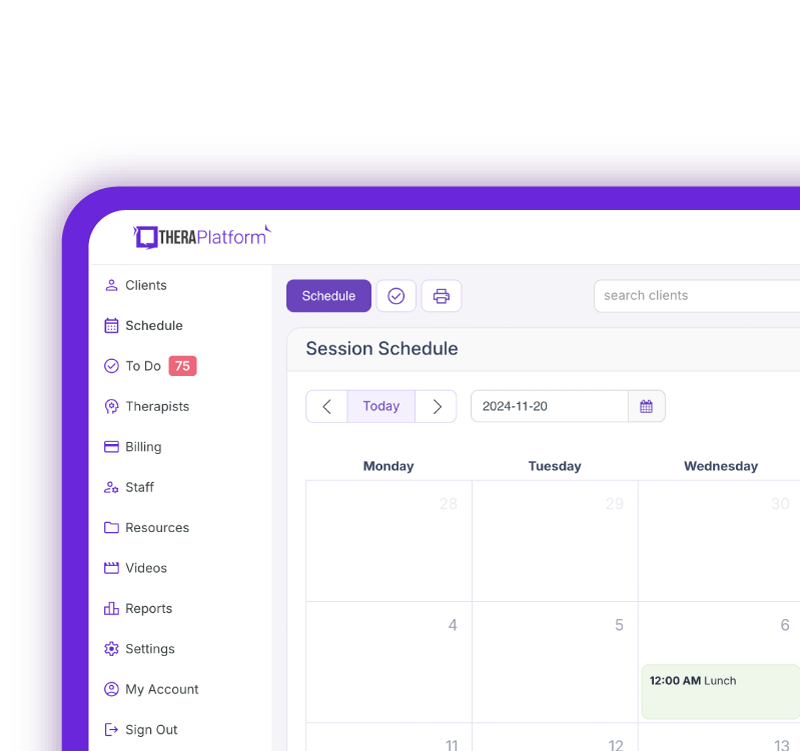Lymphedema

Lymphedema ICD 10 codes are used for a chronic disease marked by the increased collection of lymphatic fluid in the body, causing swelling, which can lead to skin and tissue changes.
Summary
- Lymphedema ICD-10 codes ensure accurate diagnosis, tracks treatment progress, and facilitates proper reimbursement for therapy services.
- Detailed documentation, including the patient’s condition, symptoms, and treatment plan, is essential for managing lymphedema effectively and ensuring smooth insurance billing.
- Therapists must select ICD-10 codes that accurately reflect the patient’s specific type and stage of lymphedema, as well as any coexisting conditions, to support effective treatment planning and billing. Enrolling in an insurance billing course for therapists can help providers enhance their knowledge.
- Electronic health records (EHRs) with integrated billing features streamline claim submissions, automate documentation, and improve accuracy, saving therapists valuable time on administrative tasks.
→ Click here to enroll in our free on-demand Insurance Billing for Therapists video course [Enroll Now]
Various causes of lymphedema include genetics, trauma, surgery, radiation, or infection. Lymphedema impacts a patient's physical, emotional, social, and overall well-being.
Streamline your insurance billing with One EHR
- Claim batching
- Auto claims
- Automated EOB & ERA
- Real-time claim validation
- Real-time claim tracking
- Aging and other reports

Purpose of ICD-10 Coding
An ICD-10 code stands for International Classification of Diseases, 10th Revision (ICD-10). It is a “diagnostic and procedure coding system endorsed by the World Health Organization (WHO).”
The use of ICD-10 codes “improves clinical communication by providing more information per code and better support for care management, quality measurement, and analytics. It also offers an improved ability to understand risk and severity.”
In occupational therapy practice, the ICD-10 is a billable/specific ICD-10-CM code that can be used to indicate a diagnosis for reimbursement purposes. Precise coding for managing lymphedema in therapy assists with client-centered treatment planning and increases efficiency in billing and documentation. These are all essential to address and manage lymphedema, track progress, and ensure appropriate reimbursement for therapy services.
What is the ICD-10 code for lymphedema?
There are several lymphedema ICD 10 codes which address the different types of lymphedema.
Primary Lymphedema ICD-10 Codes
ICD-10 Code | Condition | Description |
|---|---|---|
I89.0 | Lymphedema, not elsewhere classified. | Utilized for general cases of lymphedema classified and not due to a specific cause. |
I89.1 | Lymphedema following mastectomy. | Utilized for lymphedema post-mastectomy and important for tracking post-surgical complications |
I89.8 | Other specified disorders of lymphatic vessels. | Utilized for lesser-known presentations of complications from lymphatic vessels. |
I87.2 | Venous insufficiency (chronic) of the lower extremity | Utilized for venous insufficiency with lymphedema in the lower extremities. |
M79.6 | Pain in limb (if relevant to the patient’s symptoms) . | Utilized if pain is a primary symptom due to lymphedema. |
Documenting Lymphedema in therapy
Documentation is an integral aspect of lymphedema therapy for treatment planning, tracking progress, and ensuring billing and reimbursement. A thorough analysis of the patient’s condition including stages, symptoms, and specificities of lymphedema is crucial for a comprehensive understanding of the patient.
Stages of Lymphedema
Stage 1: No signs or symptoms: Normal flow in the lymphatic system
Stage 2: Mild: Swelling and fluid. Elevation may assist with swelling
Stage 3: Moderate: Permanent swelling with skin scarring and thickening
Stage 4: Severe: Elephantiasis (large deformed limb) and extensive scarring
Symptoms
- Swelling: Measuring circumference or volume changes
- Pain: Pain intensity, frequency, duration, triggers
- Skin changes: Notice changes such as thickness, redness, signs of infection
- Mobility: Difficulty moving your arm or leg, weakness in your arm or leg
Watch this video to learn common insurance billing struggles and solutions
→ Start My Free Trial
→ Start My Free Trial
Lymphedema ICD 10 codes for treatment
Using the correct Lymphedema ICD 10 codes in therapy documentation is crucial because it allows for a clear diagnosis, tracks the treatment process, and allows for appropriate reimbursement.
When choosing Lymphedema ICD 10 codes, therapists must pick codes that accurately reflect the patient’s current diagnosis, stage, and symptoms.
For example, code I89.1 lymphedema following mastectomy would be utilized when lymphedema occurs as a result of a mastectomy, which impacts post-surgical intervention and treatment needs.
Combining codes would allow for a comprehensive picture of the patient's current condition if there are co-existing conditions such as lymphedema (I89.0) and venous insufficiency (I89.1).
Practice Management + EHR + Telehealth
Mange more in less time in your practice with TheraPlatform

.
Lymphedema ICD 10 code billing tips
Understanding insurance coverage for lymphedema treatment is crucial, as some insurance policies impose therapy caps or specific restrictions on certain treatment protocols.
Reviewing a patient’s policy details such as coverage limits enables effective treatment planning, and goal-setting, and helps provide the patient with a clear understanding of any financial responsibilities involved in therapy.
Ensuring the correct use of Lymphedema ICD-10 codes, comprehensive documentation, incorporating patient education on insurance policies, and obtaining pre-authorization when needed can reduce claim denials, maximize reimbursement, and ultimately support the delivery of therapy treatment and care for lymphedema.
Lymphedema ICD 10 codes challenges and solutions
Therapists often encounter common coding and billing challenges, including correct code usage, navigating insurance coverage limitations, and addressing claim denials. To effectively address these issues, therapists should prioritize meticulous documentation, choose accurate codes that match the patient’s condition, verify coverage details, and obtain necessary pre-authorizations.
Staying updated on Lymphedema ICD-10 codes is essential for compliance with evolving healthcare standards and practices.
Best practices for accurate Lymphedema ICD 10 coding
Effective coding practices involve thoroughly tracking treatment objectives, documenting patient progress, consistently updating records, and utilizing electronic medical records (EMRs) with standardized templates.
Educating staff on Lymphedema ICD 10 codes further ensures accuracy and consistency. Leveraging education, resources, and EMRs not only streamlines documentation but also improves compliance with ICD-10 standards, leading to greater accuracy and efficiency in coding.
Additionally, therapists should make use of valuable tools and resources such as ICD-10 coding manuals, and reliable websites like ICD-10 Data and CMS, and seek guidance from coding specialists when needed. This comprehensive approach supports accurate billing, minimizes denials, and ensures compliance in the complex landscape of healthcare documentation.
Accurate Lymphedema ICD 10 coding is essential for ensuring proper documentation, efficient billing, and effective treatment planning. By using the correct codes for different types and stages of lymphedema, therapists can provide a comprehensive picture of the patient’s condition, support therapy interventions, and ensure appropriate reimbursement.
Thorough documentation, consistent tracking of progress, and the use of standardized templates further enhance coding accuracy and allow for efficient therapy practices. Additionally, staying informed about ICD-10 updates and utilizing available resources, including EMRs and staff education, helps maintain compliance with evolving healthcare standards.
How EHR and practice management software can save you time with insurance billing for therapists
EHRs with integrated billing software and clearing houses, such as TheraPlatform, offer therapists significant advantages in creating an efficient insurance billing process. The key is minimizing the amount of time dedicated to developing, sending, and tracking medical claims through features such as automation and batching.
What are automation and batching?
- Automation refers to setting up software to perform tasks with limited human interaction.
- Batching or performing administrative tasks in blocks of time at once allows you to perform a task from a single entry point with less clicking.
Which billing and medical claim tasks can be automated and batched through billing software?
- Invoices: Create multiple invoices for multiple clients with a click or two of a button or set up auto-invoice creation, and the software will automatically create invoices for you at the preferred time. You can even have the system automatically send invoices to your clients.
- Credit card processing: Charge multiple clients with a click of a button or set up auto credit card billing, and the billing software will automatically charge the card (easier than swiping!)
- Email payment reminders: Never manually send another reminder email for payment again, or skip this altogether by enabling auto credit card charges.
- Automated claim creation and submission: Batch multiple claims with one button click or turn auto claim creation and submission on.
- Live claim validation: The system reviews each claim to catch any human errors before submission, saving you time and reducing rejected claims.
- Automated payment posting: Streamline posting procedures for paid medical claims with ERA. When insurance offers ERA, all their payments will post automatically on TheraPlatform's EHR.
- Tracking: Track payment and profits, including aging invoices, overdue invoices, transactions, billed services, service providers.
Utilizing billing software integrated with an EHR and practice management software can make storing and sharing billing and insurance easy and save providers time when it comes to insurance billing for therapists.
Streamline your practice with One EHR
- Scheduling
- Flexible notes
- Template library
- Billing & payments
- Insurance claims
- Client portal
- Telehealth
- E-fax

Resources
TheraPlatform is an all-in-one EHR, practice management, and teletherapy software built for therapists to help them save time on admin tasks. It offers a 30-day risk-free trial with no credit card required and supports different industries and sizes of practices, including occupational therapists in group and solo practices.
More resources
- Therapy resources and worksheets
- Therapy private practice courses
- Ultimate teletherapy ebook
- The Ultimate Insurance Billing Guide for Therapists
- The Ultimate Guide to Starting a Private Therapy Practice
- Mental health credentialing
- Insurance billing 101
- Practice management tools
- Behavioral Health tools
Free video classes
- Free on-demand insurance billing for therapist course
- Free mini video lessons to enhance your private practice
- 9 Admin tasks to automate in your private practice
References
2025 ICD-10-CM diagnosis code I89.0: Lymphedema, not elsewhere classified. 2025 ICD-10-CM Diagnosis Code I89.0. https://www.icd10data.com/ICD10CM/Codes/I00-I99/I80-I89/I89-/I89.0
Lymphedema and Cancer Treatment. National Cancer Institute. https://www.cancer.gov/about-cancer/treatment/side-effects/lymphedema#what-are-symptoms-of-lymphedema
Sleigh, B. C. (2023, April 19). Lymphedema. National Library of Medicine. https://www.ncbi.nlm.nih.gov/books/NBK537239
Treating Lymphedema. Johns Hopkins Medicine. (2024, August 1).
Understanding ICD-10. Johns Hopkins Medicine. https://www.hopkinsmedicine.org/johns-hopkins-health-plans/providers-physicians/icd-10



